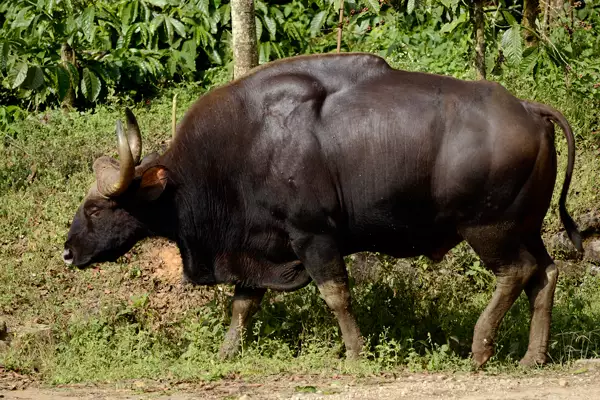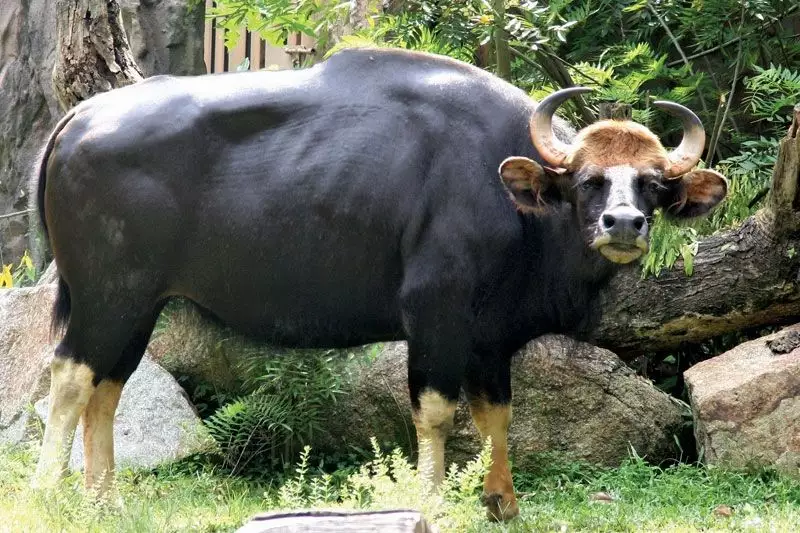Study reveals land use patterns and roads in the central Indian landscape were disrupting the genetic connectivity of two large herbivores — Gaur and Sambar.
About Gaur (Indian Bison):
- Scientific Name: Bos gaurus, the tallest species of wild cattle in India and the largest extant bovine.
- Physical Characteristics:
- Build: Massively built with a convex forehead and strong limbs.
- Size: Males weigh 600-1500 kg, while females weigh 400-1000 kg.
- Distinct Features: Features a prominent ridge on the back, sparse hair, and a creamy white or yellowish forehead in newborns, which transitions to reddish brown.
- Horns: Slightly curved inward, pale green or yellowish brown.
- Lifespan: Up to 26 years in captivity.
- Behavior and Social Structure:
- Lifestyle: Herbivorous, typically living in herds.
- Group Size: Usually 30-40 individuals.
- Alarm Call: A high-pitched snort followed by a growling “boo”.
- Habitat and Diet:
- Habitats: Predominantly found in the Western Ghats, evergreen, and moist deciduous forests, up to altitudes of 6,000 ft.
- Diet: Feeds on leaves, fruits, stems, flowers, seeds; favorites include elephant apple, Indian Box wood, and cashew plant.
- Feeding Habits: Active mainly early in the morning and late in the evenings; may resort to debarking trees for minerals during shortages.
- Threats:
- Poaching: There is a high demand for their meat and commercial value, especially prevalent along the Nepal-India border.
- Food Scarcity: Caused by the destruction of grasslands and competition with domestic animals.
- Conservation Status:
- IUCN Status: Vulnerable.
- Wildlife Protection Act, 1972: Listed under Schedule I.
- CITES: Listed in Appendix I.
Ref: Source
| UPSC IAS Preparation Resources | |
| Current Affairs Analysis | Topperspedia |
| GS Shots | Simply Explained |
| Daily Flash Cards | Daily Quiz |
Frequently Asked Questions:
What are some physical characteristics of the Gaur?
The Gaur is massively built with a convex forehead, strong limbs, a prominent ridge on its back, and slightly curved inward horns.
What is the typical group size for Gaur herds?
Gaur herds typically consist of 30-40 individuals.
In what type of habitats are Gaur mostly found?
Gaur are mostly found in the Western Ghats, evergreen and moist deciduous forests, up to altitudes of 6,000 feet.



